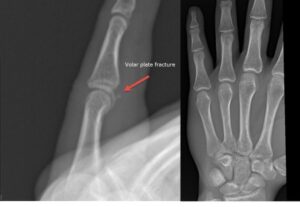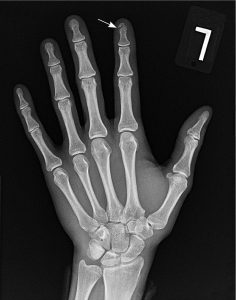Fractures of the fingers are more common in combat sports where a full boxing glove is not worn (karate, taekwondo, MMA, etc.) and are also common in grappling. The type of management will depend on the location of the fracture.
Fractures of the proximal and middle phalanges (the closest and middle bones of the finger) are often accompanied by avulsion (where a fragment of bone is pulled away by other tissue) of the volar plate (a fibrocartilage reinforcement of the joint capsule that restricts hyperextension). These injuries should be pinned for a short duration (3 to 4 weeks max) to allow for early movement.
Fractures of the distal phalanx (the furthermost bone in the finger) generally heal well with buddy taping (taping the two fingers together) and avoidance of aggravating movements for 4 to 6 weeks.

